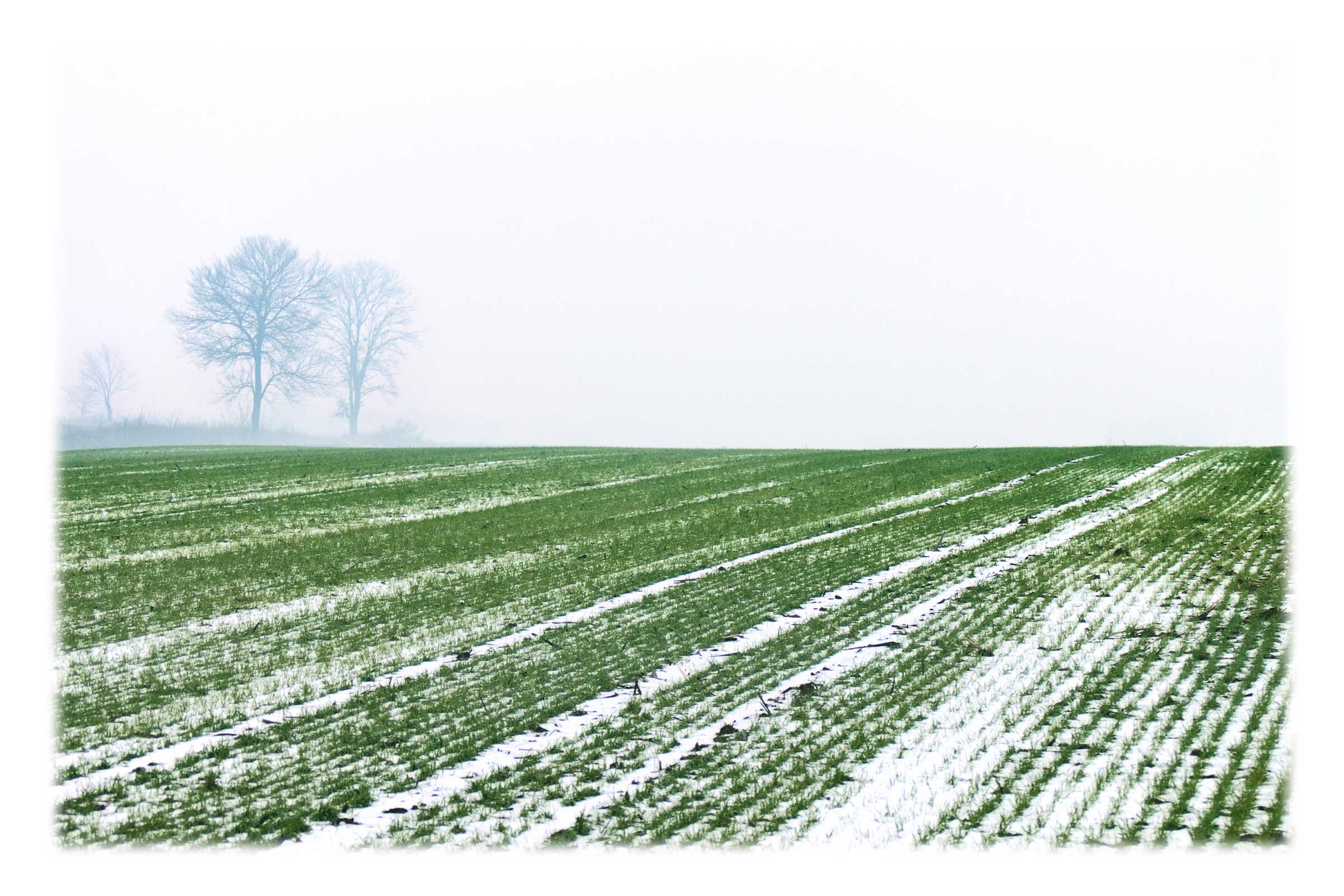Winter Wheat in February
Winter Wheat in February

Most winter wheat survived well during the previous cold weather. While the air temperatures dropped near zero most soil temperatures at 2 inches below the surface remained above freezing (Kentucky Mesonet). In the January USDA NASS Kentucky Crop Progress & Condition Report, 80% of the wheat was rated good or excellent. Wheat from last December to now is mostly at Feekes 3, which is in the tillering phase of growth. At tillering, air temperatures need to get well below freezing before injury is expected.
Soil temperatures can vary across a landscape. Normally, we expect colder temperatures at lower elevations. However, in Lexington, we observed the coldest temperatures at the top of the slope. These varying temperatures could result in localized damage to some plants. But even at the temperatures reported in the two charts in Figure 2, no or very minimal damage is expected in the wheat.
Scout for tiller counts to determine the February nitrogen (N) rate. Tillers should be between 70 to 100 tillers per square feet (630 to 900 square yard). If tillers are within this range, then 30 to 40 pounds N per acre should be applied. If tiller counts are below this range, then increase the N rate to 50 to 60 pounds per acre. If tiller counts are above this range, then no nitrogen should be applied in February. Total February and March applications should be about 90 to 120 pounds N per acre.
While counting tillers, you also can scout for aphids and any other irregularities such as gaps in stands and any other issues. As of this writing, even though much of Kentucky has abnormally cold temperatures in January, farmers and crop scouts can proceed normally with wheat management.
Soil temperature conditions can be monitored at the Kentucky Mesonet site by clicking on “Data” and in the dropdown menu selecting “Soil”. Once the new screen opens, on the left side, you can select the location, then select soil temperature and finally select if you want to see the chart for 1 week, 2 weeks, etc.
References
Kentucky Mesonet. https://www.kymesonet.org/
Lee, C. and J. Herbek. Co-editors. A Comprehensive Guide to Wheat Management in Kentucky. ID125. Kentucky Cooperative Extension Service. Lexington. https://publications.ca.uky.edu/sites/publications.ca.uky.edu/files/ID125.pdf
USDA NASS Kentucky Crop Progress and Conditions. https://www.nass.usda.gov/Statistics_by_State/Kentucky/Publications/Crop_Progress_&_Condition/index.php
Optional Citation: Lee, C. 2025. Winter Wheat in February. Kentucky Field Crops News, Vol 1, Issue 2. University of Kentucky, February 14, 2025.

